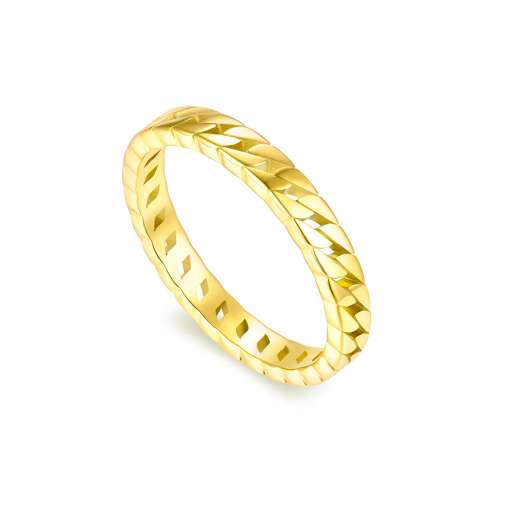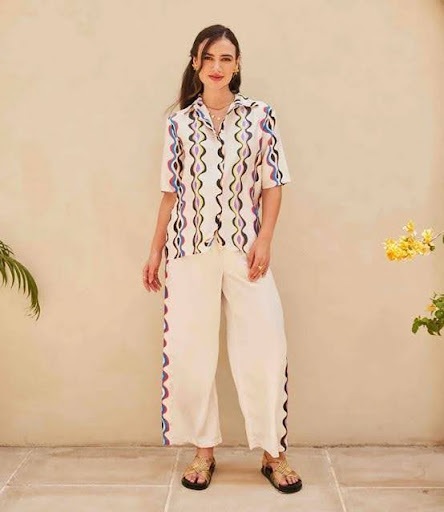
Wedding and engagement rings are among the most treasured and symbolic pieces of jewelry. They represent love, commitment, and the promise of a future together. But, have you ever wondered where these beautiful traditions came from and why they hold such significance? Let’s explore the fascinating history and importance of wedding and engagement rings in this casual and informative article.
The Origin of Engagement Rings
The custom of giving an engagement ring can be traced back to ancient times. The first recorded instance dates back to the ancient Egyptians, who believed that the ring finger on the left hand had a vein that ran directly Evry Jewels to the heart. This belief gave rise to the tradition of wearing a ring on this finger, symbolizing eternal love and unity.
In the 15th century, engagement rings began to gain popularity in Europe, particularly among the nobility. It wasn’t until the 19th century that engagement rings became widely accessible to the general public. The diamond engagement ring, as we know it today, became iconic in the 1940s, thanks to a marketing campaign by the De Beers diamond company. The famous slogan, “A diamond is forever,” cemented diamonds as the go-to choice for engagement rings, and this tradition continues to this day.
Wedding Rings: Symbol of Eternal Commitment
While engagement rings are given during the proposal phase, wedding rings are exchanged during the marriage ceremony itself. The history of wedding rings is as rich as that of engagement rings, with a variety of cultural and historical influences shaping their symbolism.
The tradition of exchanging wedding rings dates back to ancient Rome. In Roman times, the wedding ring was typically made of iron, symbolizing strength and permanence. By the Middle Ages, gold became the material of choice for wedding rings, as it was considered rare, precious, and indestructible.
Over the centuries, the wedding ring evolved from a simple band to the more intricate designs we see today. Wedding ring styles now range from plain gold bands to intricate designs featuring diamonds and other gemstones, but the underlying symbolism remains the same: the eternal bond between two people.
The Meaning Behind Wedding and Engagement Rings
Both engagement and wedding rings carry deep symbolic meaning. The circle of the ring itself is a symbol of eternity, with no beginning or end. This signifies the eternal nature of love and commitment. Additionally, the exchange of rings during a ceremony is a public declaration of the commitment between two individuals. It’s a gesture that transcends words, expressing a bond that is meant to last forever.
The engagement ring is often seen as a promise to marry, a symbol of love and the intention to build a future together. For many, the diamond in an engagement ring represents purity, strength, and durability. Diamonds, with their unmatched brilliance, are thought to symbolize the enduring nature of the couple’s love.
Wedding rings, on the other hand, symbolize the vows exchanged during the ceremony—the lifelong promises made to one another. The wedding ring exchange is a poignant moment in the ceremony, where two individuals unite not only in love but in a shared commitment to face the future together, through good times and bad.
Engagement and Wedding Ring Trends
Throughout history, the styles and materials used for engagement and wedding rings have evolved significantly. In modern times, couples have more freedom than ever to choose rings that reflect their personal taste and style. Popular engagement ring styles include solitaire diamonds, three-stone rings, and halo settings, each offering its unique flair and meaning.
When it comes to wedding ring designs, there’s something for every couple. Many people choose to match their wedding rings to the engagement ring, creating a cohesive look. Others may opt for unique, custom-designed rings that reflect their personalities or interests. In recent years, some couples have also chosen alternative wedding rings made of materials like platinum, titanium, or even wood, breaking away from traditional norms and embracing individuality.
The Role of Wedding and Engagement Rings Today
Today, wedding and engagement rings continue to serve as powerful symbols of love, but they also hold a more personal significance for many couples. Personalized rings that reflect shared experiences or interests are increasingly popular. For example, some couples may have rings engraved with a meaningful phrase, a date, or even a special song lyric that holds sentimental value.
Moreover, the rise of sustainable and ethical practices in the jewelry industry has also influenced ring choices. Many couples today seek out ethically sourced diamonds or choose lab-grown diamonds as an eco-friendly alternative. This shift in consumer behavior reflects a broader societal trend toward greater awareness of environmental and ethical issues.
Conclusion: A Timeless Tradition
From their origins in ancient civilizations to the modern-day, wedding and engagement rings remain timeless symbols of love, commitment, and unity. Whether simple or elaborate, each ring tells the unique story of the couple it belongs to. The choice of material, design, and style may change, but the meaning behind these rings remains constant. They are powerful reminders of the promises we make to those we love and the lifelong journey we undertake together.
So, the next time you admire your engagement or wedding ring, remember that it carries a rich history and a world of meaning, from ancient Egypt to today’s contemporary designs. It’s more than just a piece of jewelry—it’s a symbol of love that transcends time.

